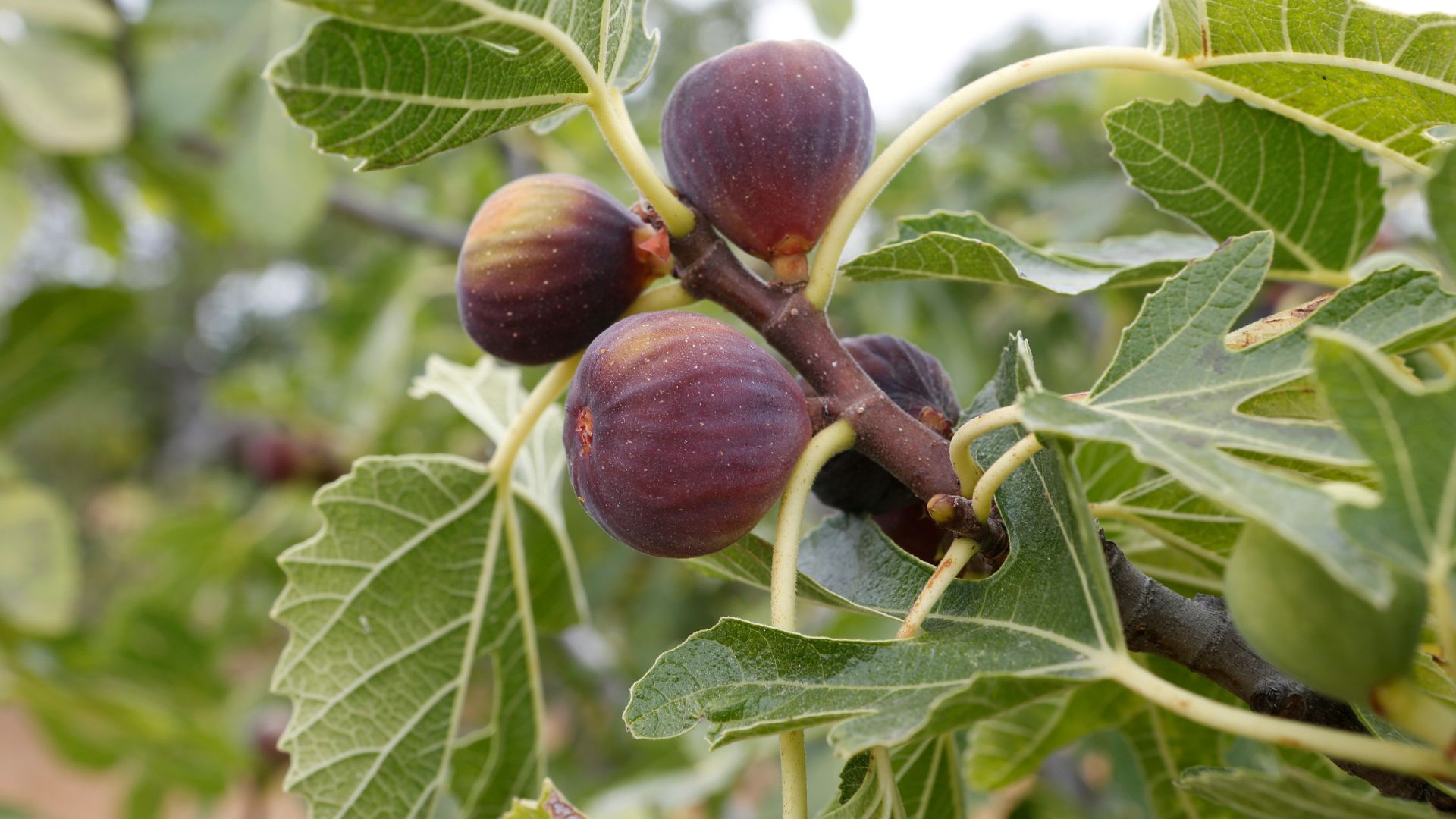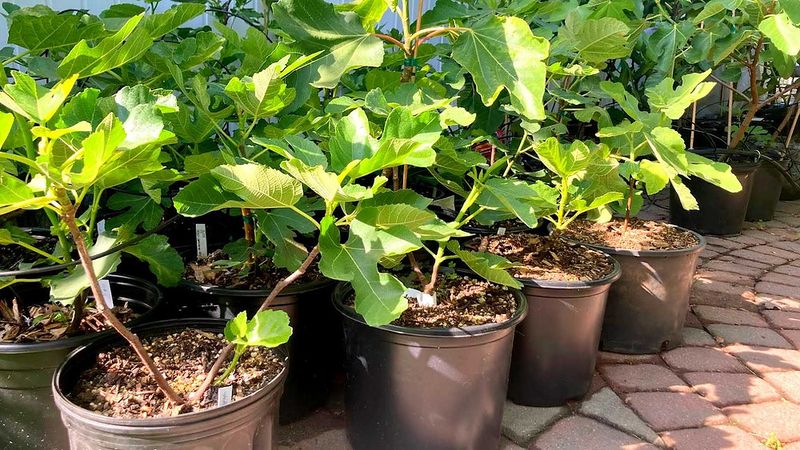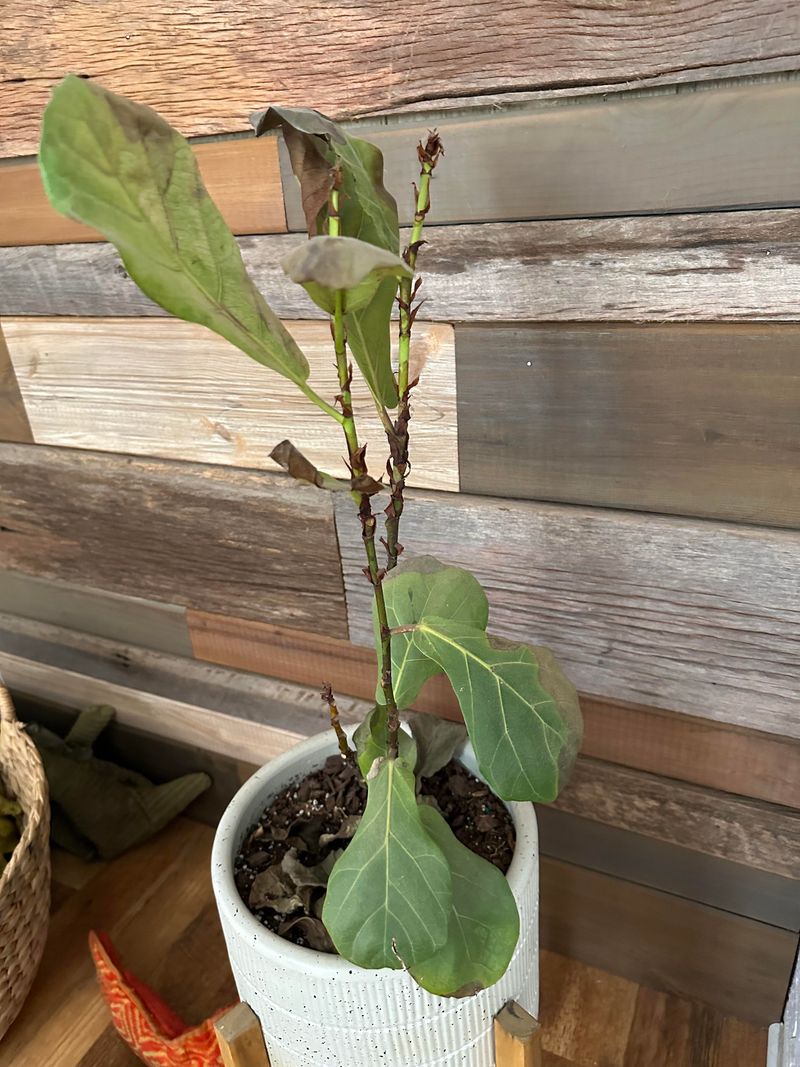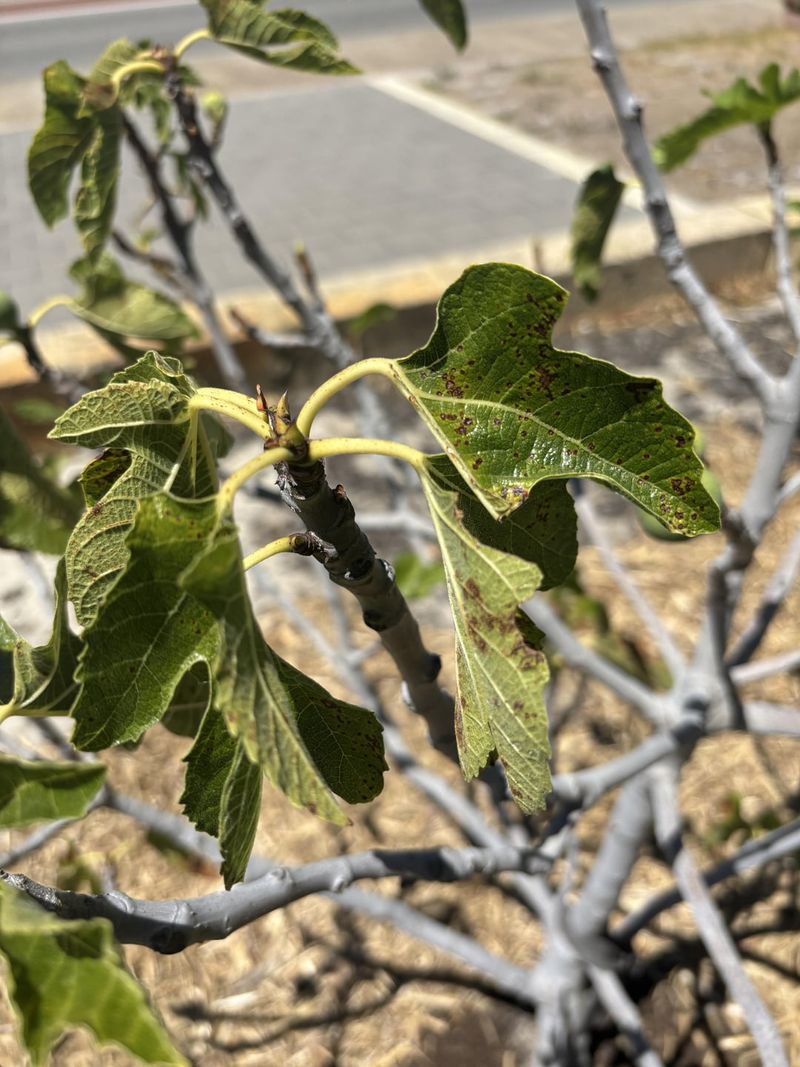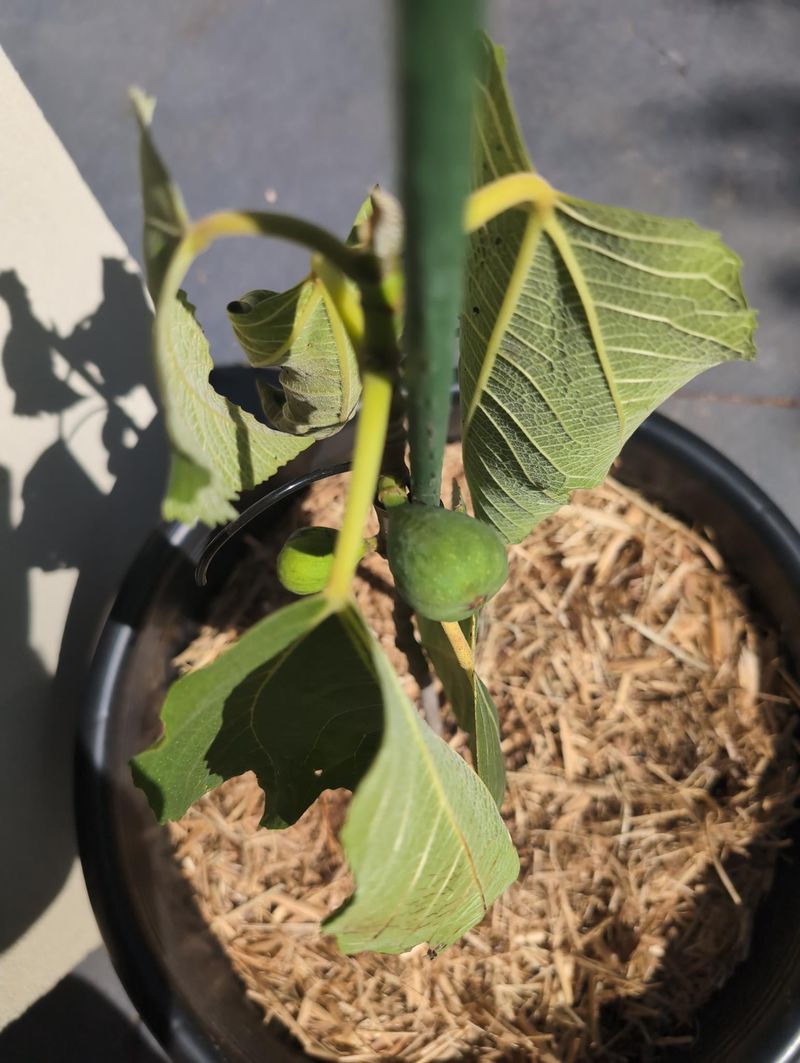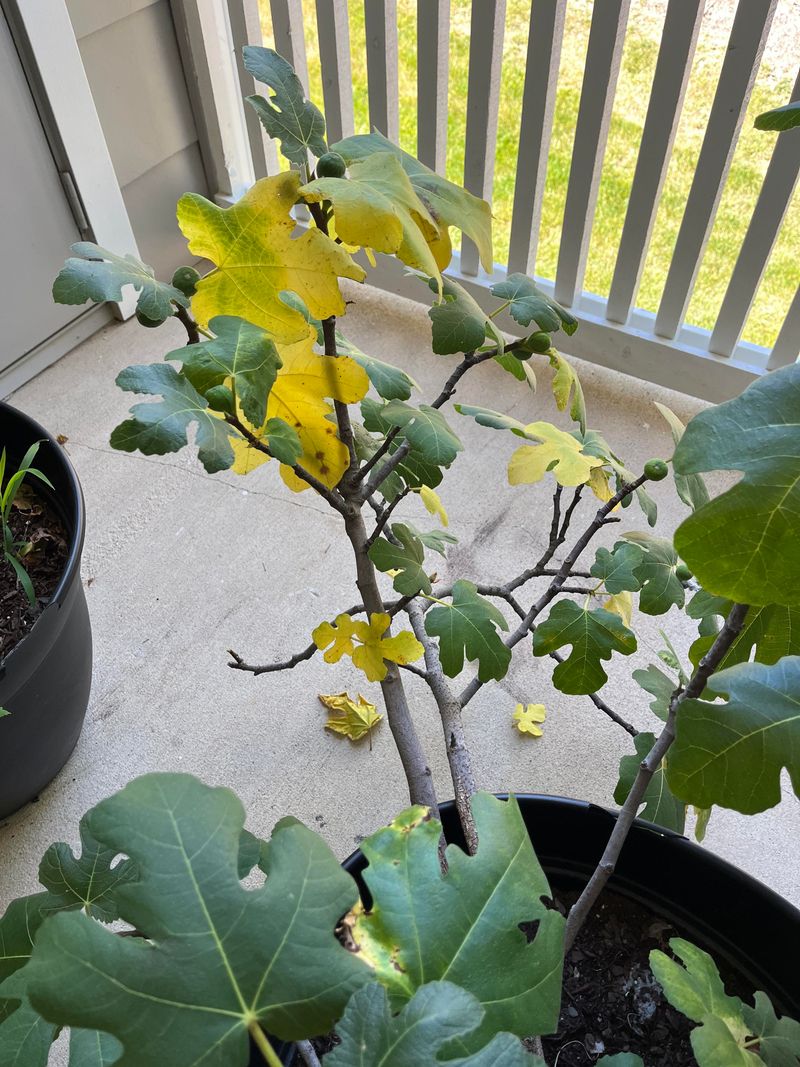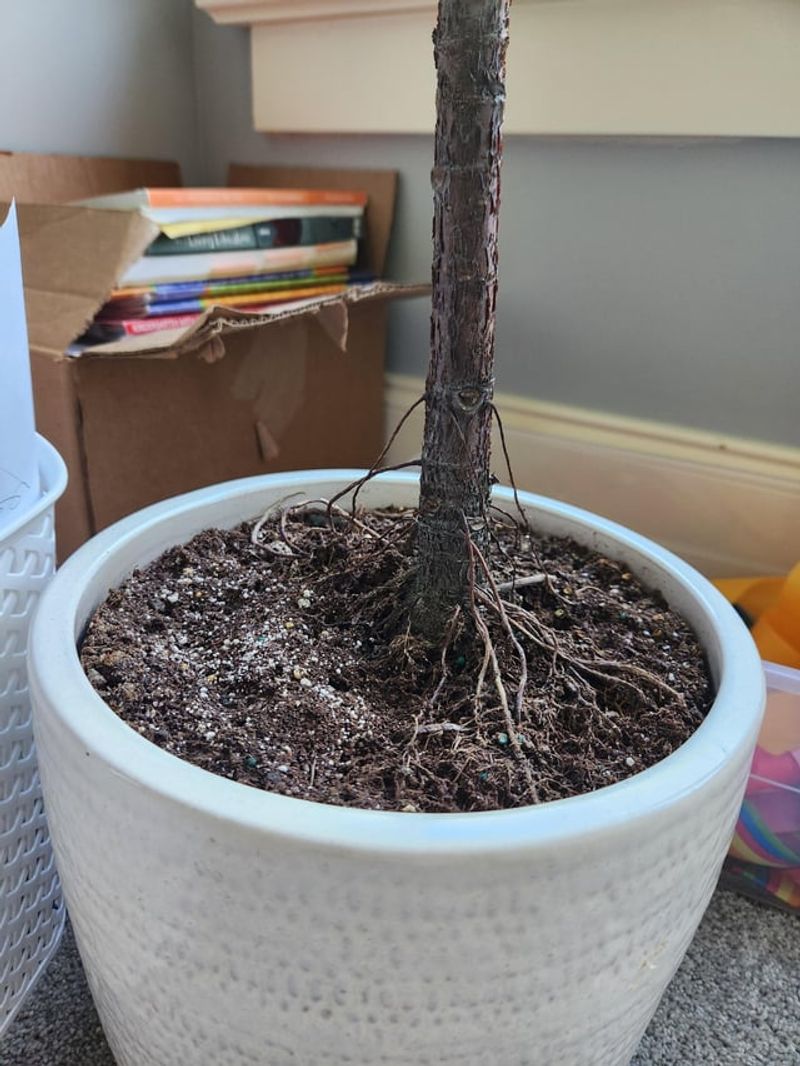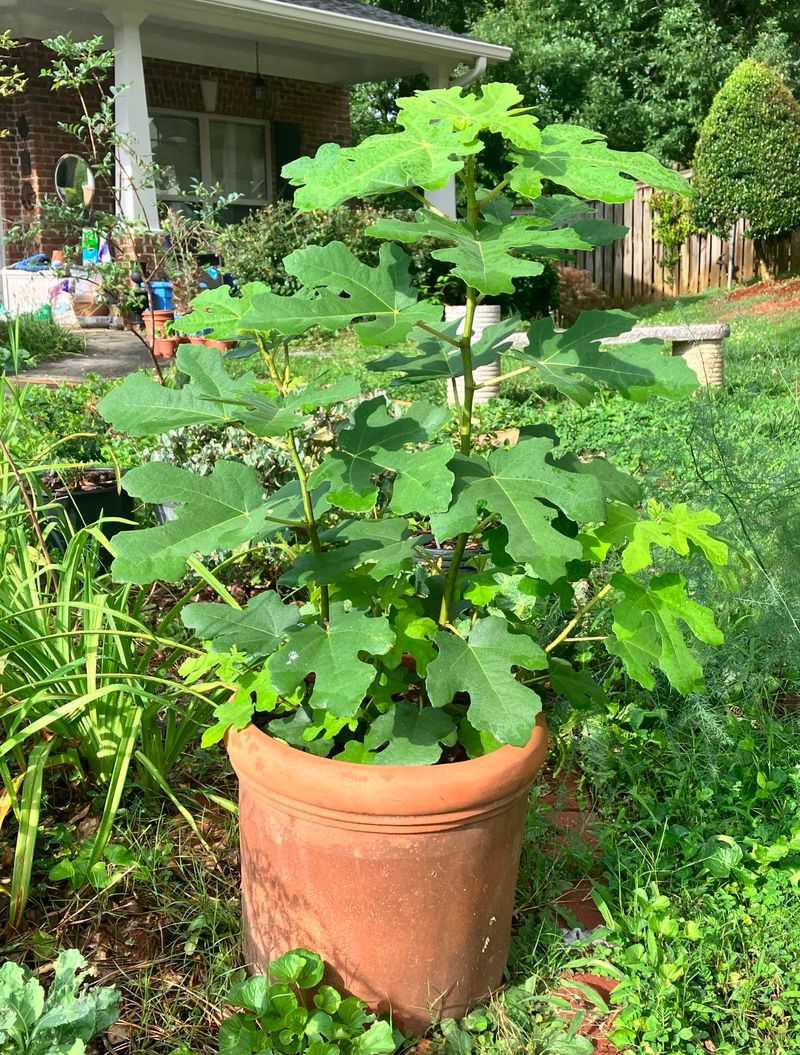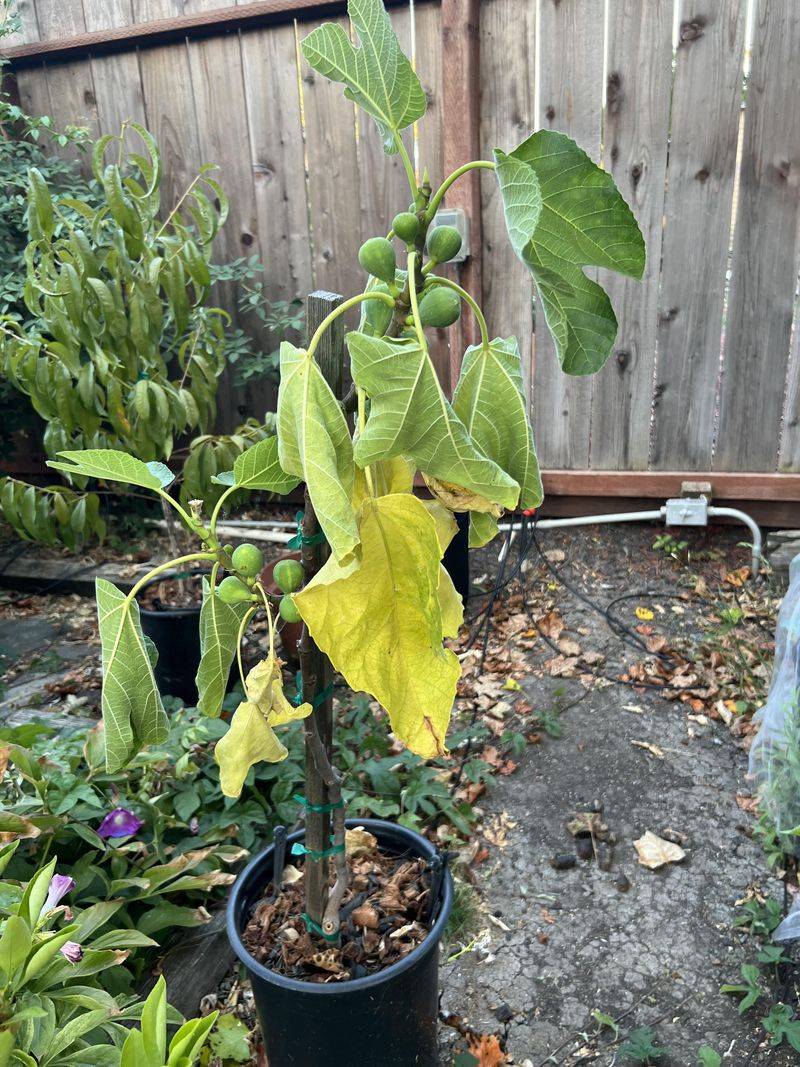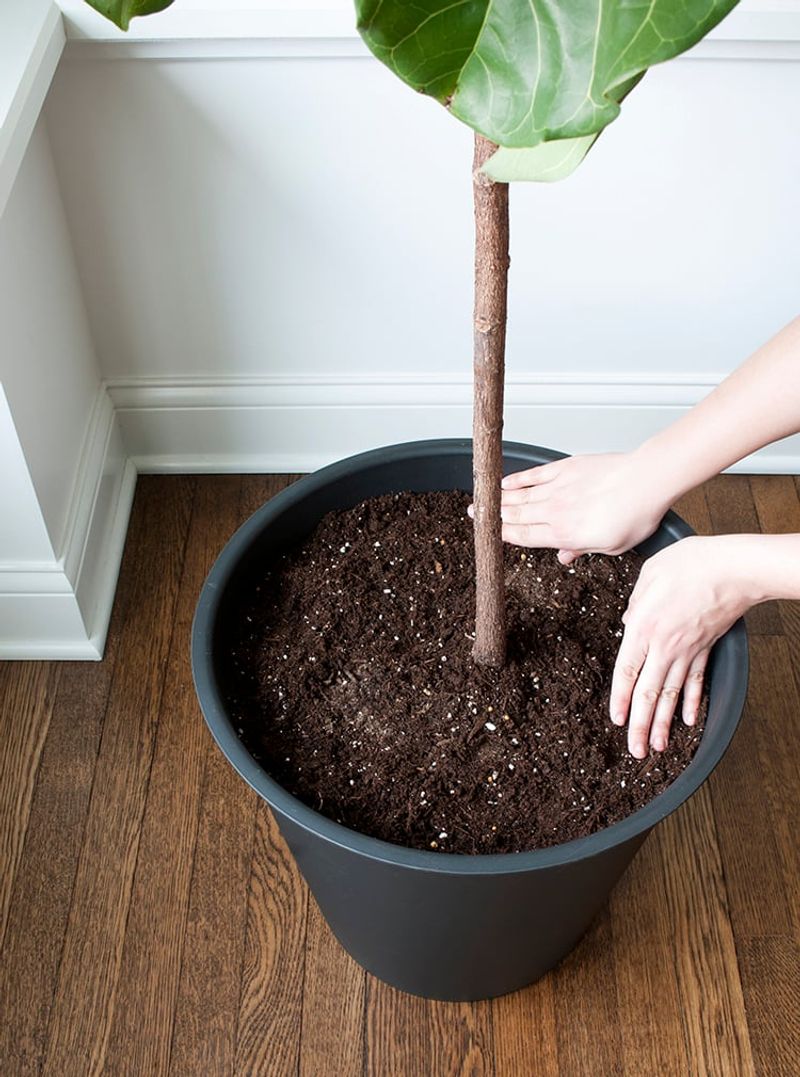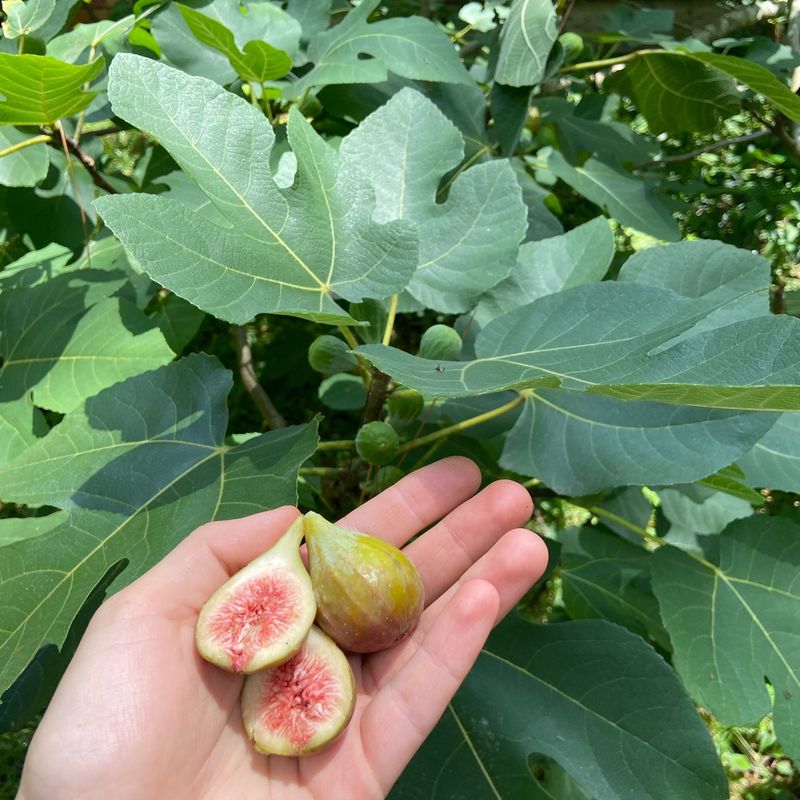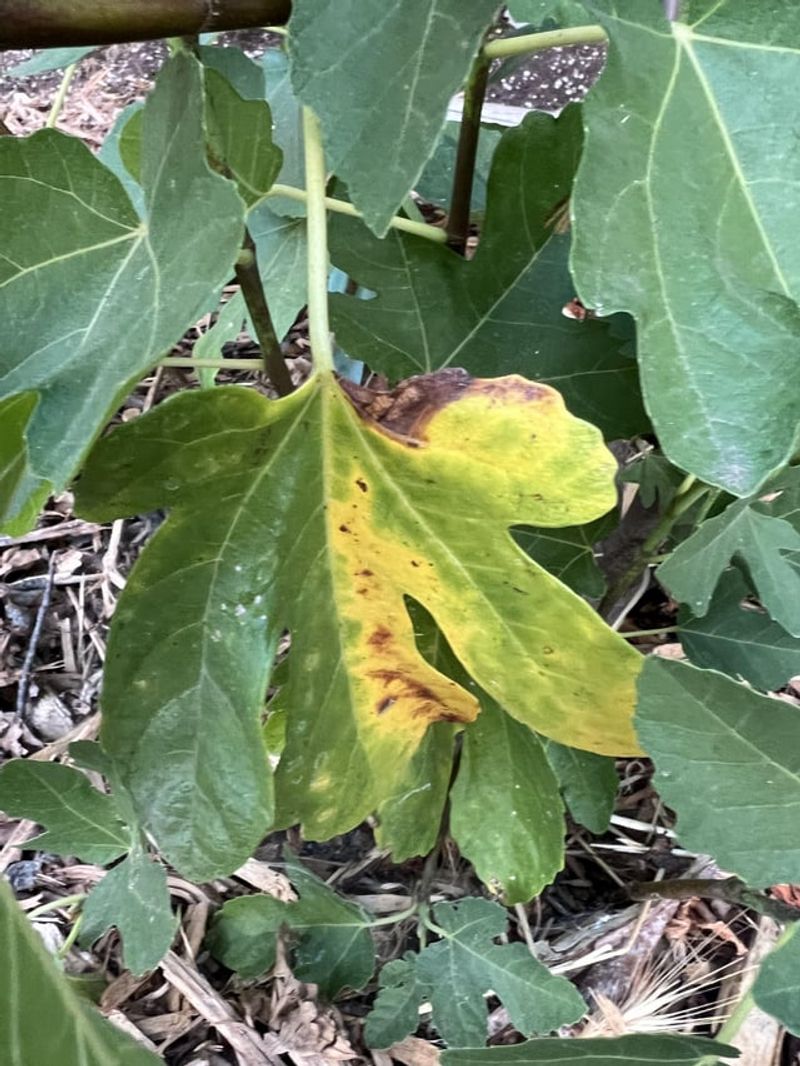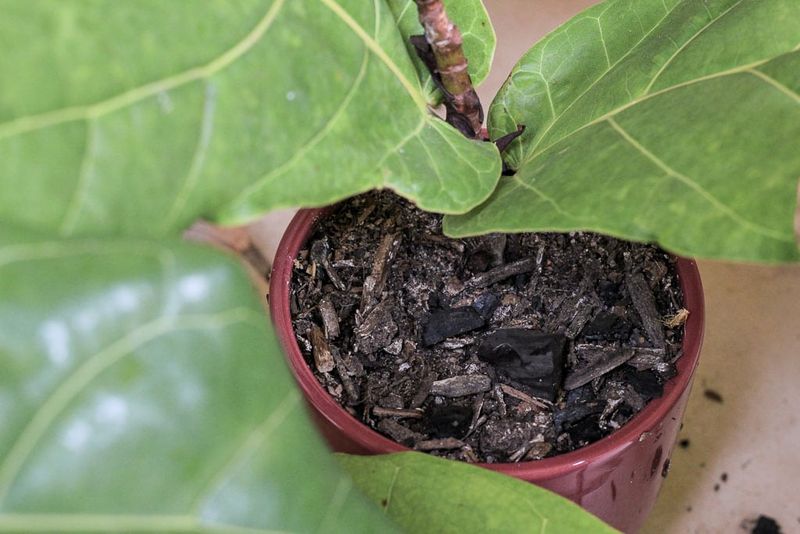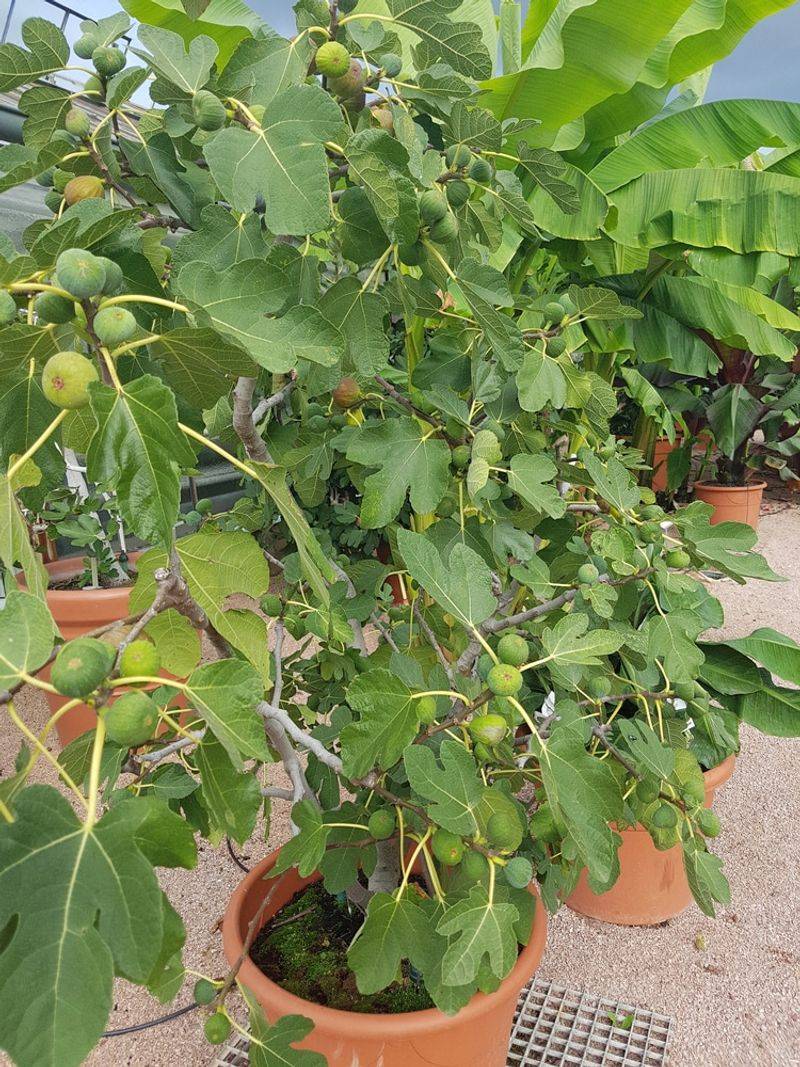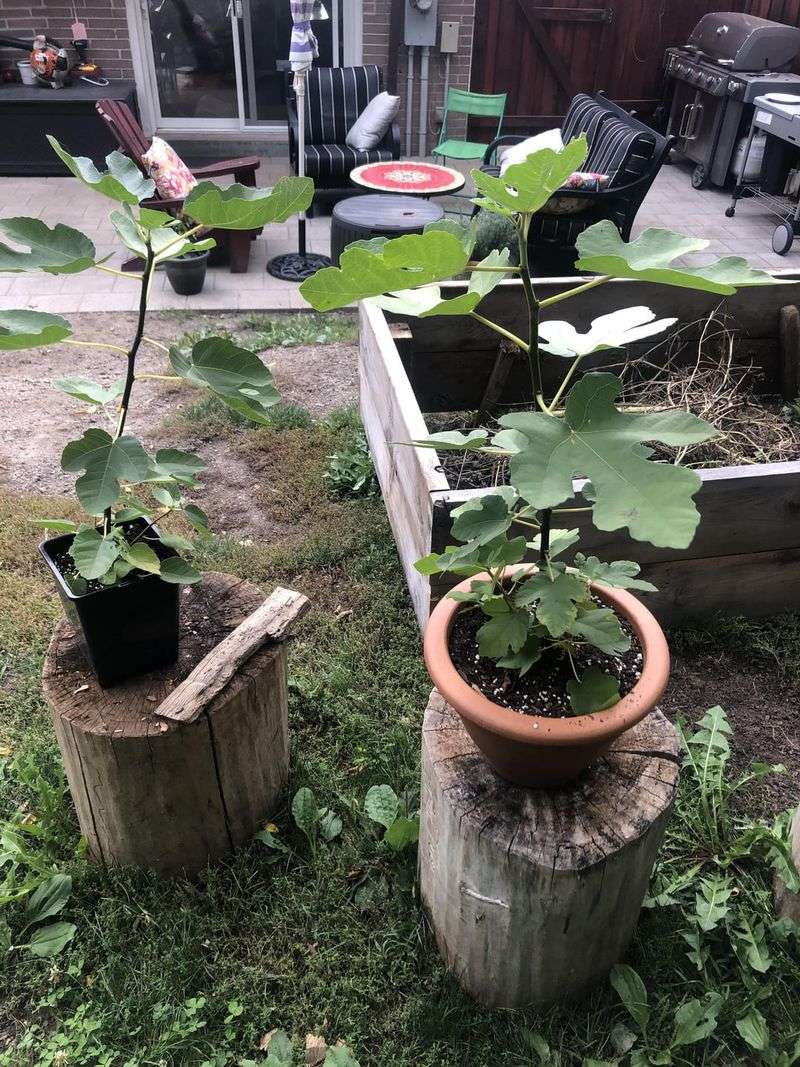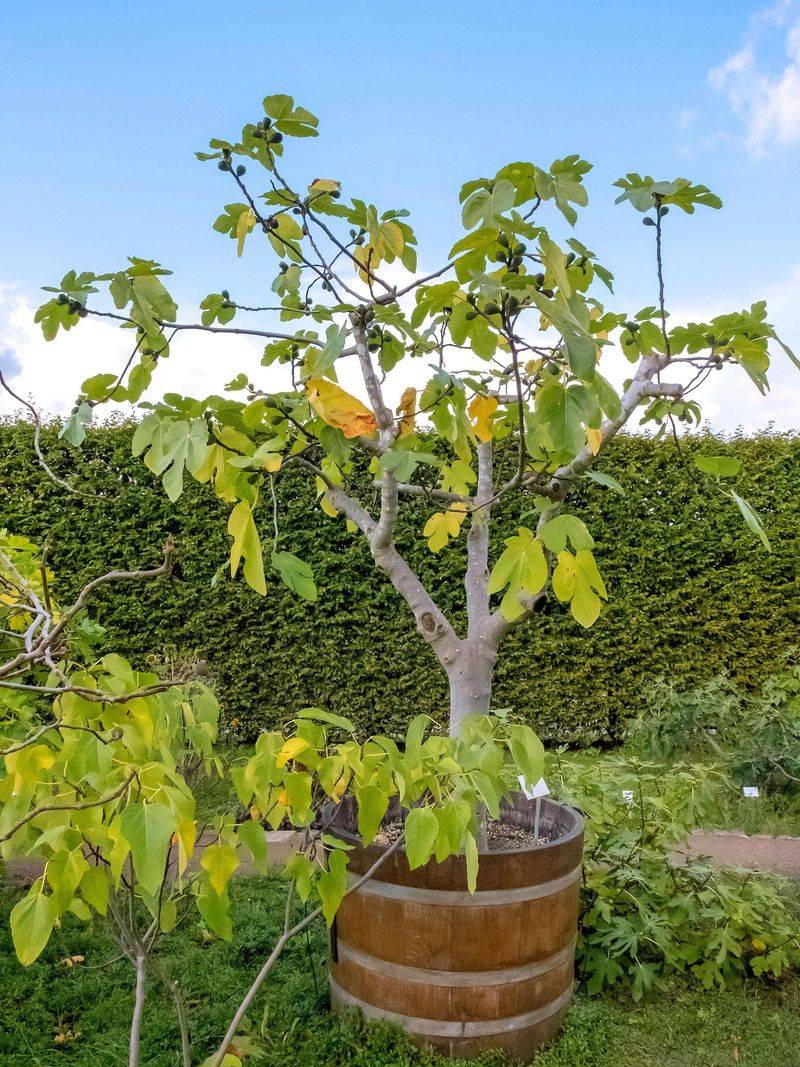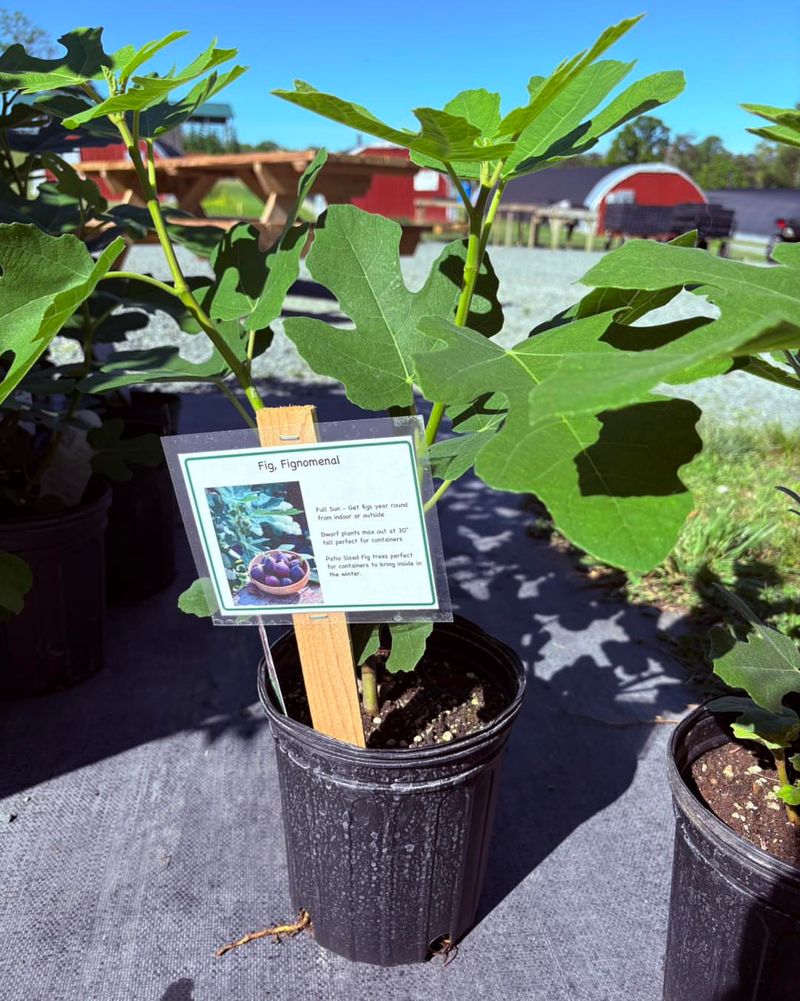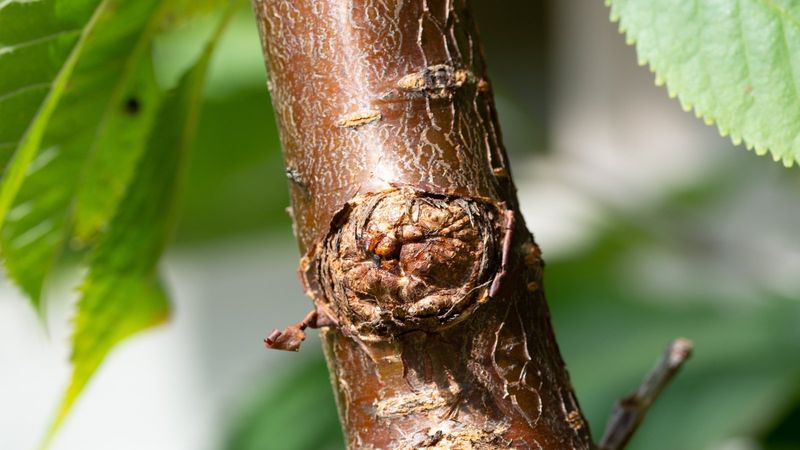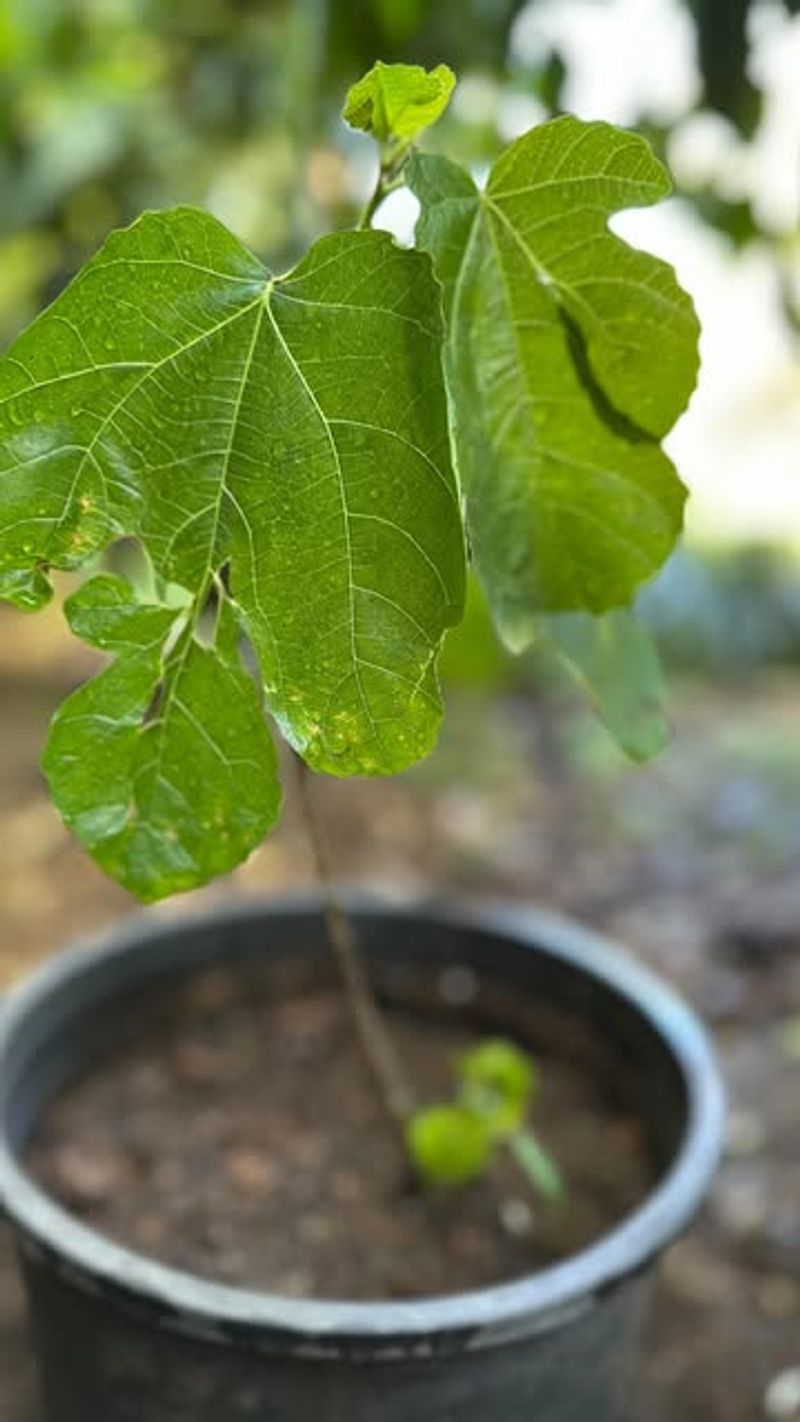Growing fig trees in containers has been one of my favorite ways to enjoy fresh fruit without needing a big backyard. They’re surprisingly easy to manage in pots, and you can even move them indoors when winter hits.
But after a few seasons, those roots start to get cramped—and your tree lets you know it’s ready for more room. I learned he hard way that keeping a fig tree in a pot too long can stall growth and reduce fruit production. If your fig starts looking a little tired, with fewer leaves or smaller harvests, it might be time to consider giving it a permanent home in the ground.
Knowing the right moment to move your fig—usually after its third or fourth year in a container—sets it up for a lifetime of rich, juicy harvests. With the right care and timing, your once-potted fig can become a star in your landscape for decades to come.
1. Roots Circling The Drainage Holes
When you notice roots poking out from the drainage holes at the bottom of your pot, your fig tree is sending you a clear signal. These escaping roots are desperately searching for more soil and nutrients beyond their confined space.
This root behavior indicates the plant has become root-bound, which will eventually stunt its growth. I once ignored these telltale signs and my fig’s fruit production dropped dramatically the following season.
Check the bottom of your container every few months during the growing season. If you spot this root escape attempt, it’s definitely time to plan your transplant operation.
2. Water Runs Straight Through The Pot
Suddenly noticing that water flows immediately through your pot without being absorbed? The soil mass has likely become so dense with roots that water can’t penetrate properly, creating channels that allow water to escape without moistening the root ball.
Many gardeners mistake this for a drainage issue rather than a sign of transplant necessity. The first time I saw this happen, I tried changing the soil mix before realizing the actual problem.
Try slowing down your watering to give moisture a chance to absorb. If it still rushes through, your fig tree needs a new, more spacious home where its roots can spread out.
3. Stunted Leaf Growth
Smaller-than-normal leaves appearing on your fig tree indicate it’s struggling in its current container. The limited root space restricts nutrient uptake, resulting in undersized foliage that lacks the robust appearance of healthy leaves.
Compare this season’s new growth with last year’s leaves. A noticeable decrease in size suggests your tree needs more room to expand its root system. I’ve seen leaf size increase by nearly 50% after transplanting a root-bound fig.
Don’t confuse this with seasonal variations – new spring leaves are naturally smaller. Look for consistently smaller leaves throughout the growing season as your primary indicator.
4. Slowed Vertical Growth
A healthy fig tree in an appropriately sized container should add several inches of new growth each season. When vertical growth stalls despite proper care, your tree is likely root-bound and unable to support normal development.
Measure and record your tree’s height periodically to track its progress. My own container-grown Brown Turkey fig went from adding 8 inches yearly to barely 2 inches before I finally transplanted it to the garden.
Root restriction affects overall vigor long before it becomes visibly obvious. Acting at the first sign of slowed growth will prevent more serious problems from developing later.
5. Yellowing Lower Leaves
When the lower leaves of your fig tree begin turning yellow and dropping prematurely, it often signals root stress from overcrowding. The plant prioritizes newer growth, sacrificing older leaves when it can’t support them all.
This yellowing pattern typically starts from the bottom and works its way up. Unlike seasonal leaf drop in autumn, this occurs during the active growing season and affects otherwise healthy-looking leaves.
I’ve rescued several root-bound figs showing this symptom. Within weeks of transplanting to larger containers or garden beds, the yellowing stopped completely and the trees regained their lush appearance.
6. Roots Visibly Circling Inside The Pot
Gently removing your fig tree from its pot reveals a telling sign: roots spiraling around the soil ball in a circular pattern. These circling roots develop when they hit the container wall and can’t grow outward naturally.
Left uncorrected, these circling roots eventually choke the plant, restricting water and nutrient uptake. During my first fig transplant, I was shocked to see roots that had wrapped around themselves three or four times!
Before replanting, use clean pruning shears to make several vertical cuts through the circling roots. This encourages new growth to spread outward rather than continuing in a restrictive circular pattern.
7. Cracking Or Bulging Container
Powerful root systems can actually break their containers when they run out of space. Noticing cracks, bulges, or distortions in your pot means your fig tree has literally outgrown its home through sheer force.
Plastic containers often show this problem first, developing bulges or splits along the sides. Even sturdy terracotta pots aren’t immune – I’ve had roots crack a ceramic pot right down the middle!
This dramatic sign leaves no room for debate about whether transplanting is necessary. When your tree starts breaking free on its own, it’s definitely telling you it needs more space to grow properly.
8. Decreased Fruit Production
A healthy fig tree increases its fruit yield year after year as it matures. When you notice fewer figs forming or smaller fruits developing, root restriction could be the culprit, especially if the tree previously produced well.
The confined root system simply can’t support both growth and optimal fruiting. My container-grown fig dropped from 24 fruits to just 7 in one season before I realized what was happening.
Keep a simple yearly record of approximately how many figs your tree produces. A sudden decline without other explanations (like unusual weather or pruning changes) strongly suggests it’s time for garden transplanting.
9. Soil Drying Out Too Quickly
Finding yourself watering your fig tree with increasing frequency? When a pot becomes crowded with roots, there’s simply less soil to hold moisture, leading to rapid drying even without temperature changes.
The dense root mass displaces soil volume, reducing water retention capacity. What once stayed moist for days might now dry out in hours. During summer, I found myself watering twice daily just to keep my root-bound fig alive.
Try this test: Note exactly how long it takes for soil to dry after thorough watering. If this timeframe keeps shortening despite consistent weather conditions, your tree is telling you it needs more soil space.
10. Top-Heavy Tree Keeps Tipping Over
A repeatedly tipping container signals your fig tree has become disproportionately large for its pot. The expanding canopy creates leverage that overcomes the stability of the root ball, causing the entire setup to become unbalanced.
This toppling tendency becomes particularly noticeable after watering (when the foliage is heavier) or during windy days. My five-year-old potted fig became so top-heavy it would fall over weekly despite being placed in a supposedly stable location.
While staking provides a temporary solution, it doesn’t address the underlying imbalance. A properly transplanted tree develops a wider root system that naturally creates the stability needed to support its growing canopy.
11. Nutrient Deficiency Despite Regular Feeding
Noticing leaf discoloration, unusual patterns, or weak growth even though you’re following a proper feeding schedule? Root-bound figs often develop nutrient deficiencies because their crowded roots can’t efficiently absorb fertilizer.
Symptoms might include yellowing between leaf veins, purple leaf undersides, or stunted branch tips. I once doubled fertilizer applications trying to fix these issues before realizing the true problem wasn’t nutrient quantity but root space.
Increasing fertilizer won’t solve this issue and may actually burn roots. When a properly fertilized fig still shows deficiency signs, it’s nature’s way of requesting more soil volume for proper nutrient extraction.
12. Root Mass Visible At Soil Surface
Exposed roots appearing on the soil surface indicate your fig tree has run out of downward and outward growing space. These surface roots develop when the plant desperately searches for any available expansion room.
You might notice woody roots beginning to circle around the top of the soil or pushing upward, creating an uneven surface. The first time I saw this happening, I mistakenly tried adding more soil on top, which only temporarily masked the problem.
Surface roots are particularly vulnerable to drying out and temperature fluctuations. Their appearance is a clear signal that your fig needs the deeper, more protected root environment that garden planting provides.
13. Tree Size Exceeds Recommended Container Ratio
Most fig varieties maintain a healthy balance when the container is roughly one-third to one-half the height of the tree. When your tree significantly exceeds this ratio, it’s outgrown its current home regardless of other symptoms.
A mature fig can reach 15-30 feet tall in the ground but remains stunted in a pot. My container-grown fig hit 6 feet while still in a 24-inch pot – well beyond the ideal proportion for continued container culture.
Some growers intentionally use root restriction to keep figs small, but this requires specialized pruning and care. For most home gardeners, exceeding the recommended ratio means it’s time for garden transplanting to allow natural development.
14. Soil Level Has Mysteriously Dropped
Noticing the soil surface has sunk noticeably below the pot rim? This common phenomenon occurs when roots consume the organic matter in potting soil, essentially eating away the growing medium over time.
As decomposition progresses and roots expand, the total soil volume decreases. I’ve seen potting mix levels drop 2-3 inches in a single season in a heavily root-bound fig container.
Simply adding more soil doesn’t solve the underlying issue – the roots have already filled available space. This mysterious disappearing soil act is your fig’s way of demonstrating it needs a complete transplant with fresh growing medium.
15. Tree Age Has Reached Transplant Maturity
Even without visible stress signs, most container-grown figs benefit from garden transplanting after 3-5 years. By this age, they’ve developed sufficient root structure to survive the transition while still being young enough to adapt quickly.
Waiting too long makes transplanting more stressful for the tree and more labor-intensive for you. My oldest potted fig struggled significantly more during transplanting than younger specimens, taking nearly a full season to fully recover.
Check your purchase or propagation records to determine your tree’s age. If it’s been thriving in the same container for 3+ years, consider transplanting even if problems aren’t yet apparent.
16. Branches Growing in Unusual Directions
Contorted growth patterns often develop when a fig tree redirects energy away from normal upward growth due to root restriction. Branches may grow sideways, downward, or in zigzag patterns rather than following typical upward arches.
This abnormal growth occurs as the plant struggles to balance its canopy with limited root support. The first time I noticed this strange directional growth, I incorrectly blamed improper pruning techniques.
While some branch irregularity is normal, sudden changes in growth direction throughout the canopy suggest the tree cannot support proper development in its current container and would benefit from the unrestricted root growth possible in garden soil.
17. Bark Cracking Or Trunk Constriction
Examining your fig’s trunk reveals important clues about its container comfort. Unusual cracks in the bark or visible constriction at soil level often indicate stress from insufficient root space affecting overall vascular health.
These trunk abnormalities develop when nutrients and water can’t flow properly between roots and canopy. I once had a potted fig develop a strange hourglass shape at the soil line before I realized the restriction was affecting the entire trunk structure.
Unlike normal bark texturing that occurs with age, stress-related trunk problems appear relatively suddenly and often coincide with other symptoms. This type of trunk distress strongly suggests garden transplanting would benefit the tree’s long-term health.
18. The Perfect Transplanting Weather Has Arrived
Timing matters tremendously when moving fig trees to the garden. Early spring, just as buds begin swelling but before leaves unfurl, provides ideal transplanting conditions with minimal shock to the tree.
This perfect window typically occurs when soil temperatures reach about 50°F (10°C) and all danger of hard frost has passed. In my climate, this magical moment usually happens in late March to early April, though it varies by region.
Avoid summer transplanting when possible, as the stress of root disturbance combined with heat can severely shock your fig. If your tree shows multiple transplant indicators and perfect weather conditions coincide, don’t delay – it’s nature’s ideal moment for the big move.

